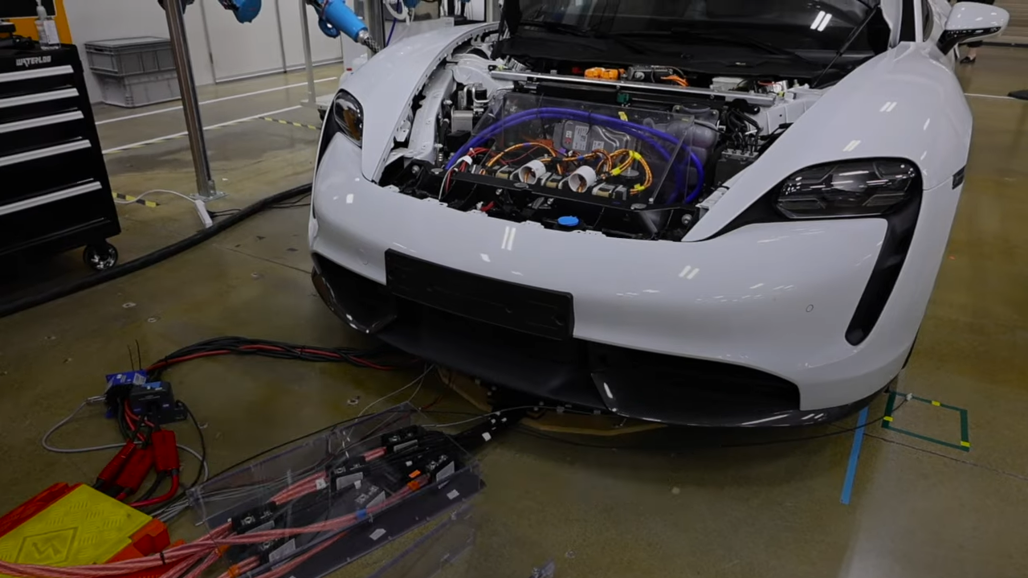In a world where convenience and sustainability are rapidly becoming top priorities, wireless EV charging is emerging as a game-changer in urban infrastructure. Imagine pulling into a parking spot and having your electric vehicle (EV) charged without the need to plug in. According to a recent report by Bloomberg Green, wireless charging technology for EVs could see a significant global market growth of over 36% annually by 2025. This article will delve into how wireless EV charging is revolutionizing cities, the technology behind it, and the potential impact on urban living.
The Rise of Wireless EV Charging Technology
How Wireless Charging Works
Wireless charging, also known as inductive charging, uses electromagnetic fields to transfer energy between two objects. This is done through a charging pad embedded in the ground and a receiver installed in the vehicle. Here’s how it works:
- Inductive Coupling: Energy is transferred via a magnetic field between coils in the pad and the vehicle.
- Magnetic Resonance: This allows for energy transfer over a short distance, typically a few inches.
- Efficiency: Current systems can achieve up to 90% efficiency, comparable to traditional plug-in chargers.
Key Players in the Market
Several companies are at the forefront of wireless charging technology:
- Plugless Power: Based in the US, they offer aftermarket wireless charging systems for various EV models.
- WiTricity: A Massachusetts-based company pioneering magnetic resonance technology, working with major automakers like Hyundai and Nissan.
- ElectReon: An Israeli company focused on dynamic wireless charging, allowing vehicles to charge while driving.
Benefits of Wireless Charging
- Convenience: No need to handle cables; simply park and charge.
- Urban Integration: Charging pads can be integrated into existing infrastructure like parking lots and roads.
- Reduced Wear and Tear: Eliminates the mechanical wear associated with plug-in chargers.
Transforming Urban Infrastructure
Implementing Wireless Charging in Cities
Cities around the world are beginning to adopt wireless charging technology. For instance, Oslo, Norway, is piloting wireless charging for its taxi fleet, aiming for a fully electric taxi system by 2024. Here’s how wireless charging could transform urban areas:
- Public Transport: Buses and taxis can charge wirelessly at stops or while driving.
- Smart Parking: Integration with smart city grids to optimize energy use and manage demand.
- Residential Areas: Enables seamless charging for residents without private garages.
Challenges and Considerations
While promising, wireless EV charging faces several challenges:
- Infrastructure Costs: High initial costs for installation and maintenance.
- Standardization: Lack of universal standards for wireless charging systems.
- Technological Limitations: Current systems require precise alignment to achieve maximum efficiency.
Practical Guide to Wireless Charging
How to Use Wireless Charging for EVs
- Check Compatibility: Ensure your EV model supports wireless charging. Many new models from brands like Hyundai and Nissan are equipped with this feature.
- Install a Receiver: If not pre-installed, you may need an aftermarket receiver from companies like Plugless Power.
- Find Charging Spots: Use apps or maps provided by service providers to locate wireless charging spots.
Where to Buy Wireless Charging Systems
- Online Retailers: Platforms like Amazon and specialized EV accessory sites.
- Authorized Dealers: Contact your vehicle’s manufacturer for compatible systems and installation services.
What to Compare When Choosing a System
- Efficiency: Look for systems with high efficiency ratings to reduce energy loss.
- Compatibility: Ensure compatibility with your vehicle model.
- Cost: Consider both upfront costs and potential savings from convenience and reduced wear.
The Future of Wireless EV Charging
As cities strive to become more sustainable and energy-efficient, wireless EV charging offers a promising solution. According to the International Energy Agency (IEA), the adoption of wireless charging could lead to a 25% increase in EV usage in urban areas by 2030. This technology not only simplifies the charging process but also integrates seamlessly into the urban environment, paving the way for smarter, greener cities.
In conclusion, wireless EV charging is set to revolutionize urban infrastructure, offering a convenient and efficient alternative to traditional charging methods. As technology advances and infrastructure evolves, the dream of a fully integrated wireless charging network in our cities is becoming a reality. Are you ready to embrace this electrifying future? Share your thoughts in the comments below and let us know how you think wireless charging will impact your urban experience.
By staying informed and engaged with the latest in EV technology, we can all contribute to a more sustainable future. Keep an eye on this space for more updates, and let’s drive into a wireless world together!

